


The Dawn Of Intelligent Living

The concept of "future-ready homes" has become a prominent and exciting vision of modern living. As technology continues to advance at a rapid pace, our homes are transforming into intelligent, interconnected spaces designed to enhance our quality of life, promote sustainability, and prepare us for a future that is increasingly dependent on technology. In this article, we will explore the key elements and benefits of future-ready homes.
Smart Living At Its Best
Future-ready homes are characterized by their integration of cutting-edge technology, automation, and intelligent systems. These homes use the power of the Internet of Things (IoT) to create an interconnected ecosystem, where devices and appliances can communicate and work together seamlessly. From lighting and climate control to security and entertainment, every aspect of daily life is optimized for convenience and efficiency.
Energy Efficiency And Sustainability
A central focus of future-ready homes is sustainability. These homes incorporate energy-efficient solutions that not only reduce utility costs but also minimize environmental impact. Solar panels, smart lighting, and advanced insulation systems are just a few examples. Future-ready homes can harvest and store energy, monitor usage, and make real-time adjustments to conserve resources.
Security And Peace Of Mind
Security is paramount in future-ready homes. Advanced surveillance systems with high-resolution cameras, motion detectors, and smart locks provide unparalleled protection for homeowners. These systems can be monitored and controlled remotely through smartphones, giving homeowners peace of mind and the ability to respond swiftly to any security concerns.
Customization And Personalization
Future-ready homes are designed to adapt to the needs and preferences of their inhabitants. For example, intelligent thermostats learn your temperature preferences and create customized schedules. Personal virtual assistants, such as Amazon's Alexa or Google Assistant, respond to voice commands to control various functions within the home, including lighting, music, and climate control. This level of personalization creates a truly unique living experience.
Future-Proofing Your Investment
Investing in a future-ready home is not only about enjoying the benefits of smart living but also about ensuring your property remains valuable and relevant. As technology continues to evolve, future-ready homes are adaptable and can incorporate new advancements. This feature is invaluable for homeowners who want to stay current and harness the full potential of technological progress.
A Sustainable And Connected Lifestyle
Future-ready homes contribute to a more sustainable and connected way of life. Homeowners can access real-time data about energy consumption and usage patterns, empowering them to make informed decisions about resource management. Smart appliances communicate with each other to optimize energy usage, while irrigation systems in the garden can adjust water flow based on weather conditions. These homes are not just intelligent; they are also environmentally conscious.
The Future Is Now
The era of future-ready homes is here, and it's revolutionizing the way we live, making our lives more efficient, convenient, and sustainable. As technology continues to advance, the possibilities for future-ready homes are boundless. They are more than just a trend; they represent a new way of life that prioritizes smart living, environmental responsibility, and adaptability to a constantly changing world.
Future-ready homes are a testament to human ingenuity and our ability to harness technology to create spaces that improve our lives. These homes are not just residences; they are gateways to a smarter, more sustainable, and future-proof way of living. As the world becomes increasingly connected and technology-dependent, future-ready homes are set to become the new standard in modern living.


A Sustainable Solution For A Thirsty World
 Types Of Water Reuse Systems
Types Of Water Reuse Systems
Direct Potable Reuse (DPR): DPR systems treat wastewater to a high standard and then inject it directly into a drinking water supply, bypassing the need for natural recharge. Although this approach is effective, it requires advanced treatment processes and stringent monitoring to ensure water quality and safety.
Indirect Potable Reuse (IPR): IPR systems involve the injection of treated wastewater into an environmental buffer, such as an aquifer or reservoir, before it is eventually extracted for drinking water treatment. This approach provides an additional layer of natural treatment and is considered a safer alternative to DPR.
Non-Potable Water Reuse: Many water reuse systems are designed for non-potable applications. These systems treat wastewater to a level suitable for purposes like irrigation, industrial processes, toilet flushing, and cooling systems in power plants. Non-potable water reuse significantly reduces the demand on freshwater sources for these activities.
Environmental And Economic Benefits
Water reuse systems offer several compelling benefits:
Conservation: Reusing water reduces the amount of freshwater withdrawn from rivers and aquifers, helping protect ecosystems and maintaining their natural flow.
Energy Savings: Treating and transporting water requires energy. By reusing water locally, we reduce the energy footprint associated with long-distance water conveyance.
Cost Reduction: Municipalities and industries can save on water treatment and distribution costs by adopting water reuse systems.
Maximizing Space, Minimizing Footprint
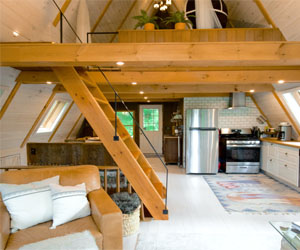 Minimalism: Compact living encourages minimalism, which involves owning fewer possessions and simplifying one's life. The focus is on quality over quantity, with an emphasis on what truly adds value to one's life. This approach can lead to reduced stress, lower costs, and more freedom.
Minimalism: Compact living encourages minimalism, which involves owning fewer possessions and simplifying one's life. The focus is on quality over quantity, with an emphasis on what truly adds value to one's life. This approach can lead to reduced stress, lower costs, and more freedom.
Affordability: Smaller living spaces tend to be more affordable, making homeownership more accessible to a broader range of people. Compact living allows individuals to save money and allocate their resources to other priorities, such as travel, education, or experiences.
Urban Living: Compact living is particularly suited for urban environments, where space is at a premium. It allows people to live close to work, amenities, and cultural attractions. The reduced need for long commutes also contributes to sustainability.
Community Focus: Many compact living developments incorporate shared spaces and communal areas, fostering a sense of community among residents. This promotes social interaction and a sense of belonging.
Illuminating Our Path To Sustainability
 Solar energy holds immense promise for the future for several compelling reasons:
Solar energy holds immense promise for the future for several compelling reasons:
Inexhaustible Resource: The sun, our ultimate energy source, is an almost inexhaustible and free resource. It continually emits an enormous amount of energy, more than humanity could ever consume.
Environmental Benefits: Solar power is one of the cleanest and most environmentally friendly energy sources available. It produces no greenhouse gas emissions, air pollution, or water usage, making it a key player in mitigating climate change.
Global Accessibility: Solar energy is accessible virtually everywhere on the planet. As long as there is sunlight, solar panels can be installed and harnessed, making it a democratic energy source.
Technological Advancements: Ongoing advancements in solar technology continue to drive down costs and improve efficiency, making it increasingly attractive and affordable for individuals, businesses, and governments.
The Role Of Solar Energy In The Future
Transition To Renewable Energy: Solar energy will play a pivotal role in the transition from fossil fuels to renewable energy sources. As our understanding of the urgency of addressing climate change grows, solar power will be an integral part of this shift.
Grid Integration: Future energy systems will be smart and interconnected, with solar power integrated into the grid to ensure a reliable and consistent energy supply. Solar energy, combined with energy storage solutions like batteries, will enable us to use solar power during cloudy days and at night.
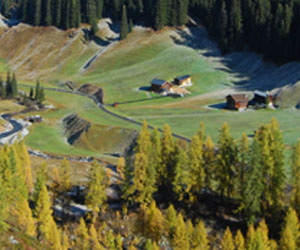


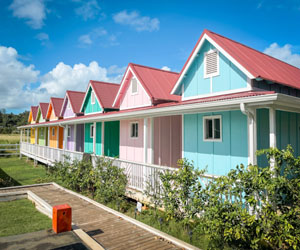


The Power Of Precision Agriculture
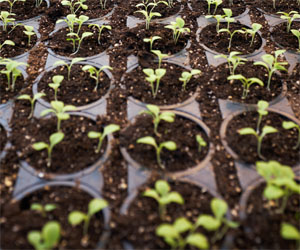 Precision agriculture is an innovative approach to farming that utilizes technology to precisely manage resources and make data-driven decisions throughout the agricultural process. It involves the application of various technologies, including satellite imagery, GPS systems, sensors, and data analytics, to monitor and control the variables affecting crop growth, animal husbandry, and farm operations.
Precision agriculture is an innovative approach to farming that utilizes technology to precisely manage resources and make data-driven decisions throughout the agricultural process. It involves the application of various technologies, including satellite imagery, GPS systems, sensors, and data analytics, to monitor and control the variables affecting crop growth, animal husbandry, and farm operations.
Maximizing Resource Efficiency
One of the primary objectives of precision agriculture is to maximize the efficient use of resources. By collecting and analyzing data on soil health, weather conditions, and crop performance, farmers can make informed decisions regarding irrigation, fertilization, and pest control. This not only results in cost savings but also reduces the environmental impact of farming by minimizing the use of water, energy, and chemicals.
Data-Driven Decision Making
The heart of precision agriculture is data. Farmers collect a wealth of information from various sources, such as drones, sensors, and satellite imagery. This data is then processed and analyzed to provide valuable insights. These insights enable farmers to tailor their actions to the specific needs of their fields, crops, or livestock. For example, sensors can monitor soil moisture levels, helping farmers determine when and where to irrigate, while drones can provide a bird's-eye view of crop health, allowing for targeted interventions.
Enhancing Crop Yield And Quality
Precision agriculture has a direct impact on crop yield and quality. By ensuring that crops receive the precise amount of water, nutrients, and care they need, farmers can significantly increase production.
Cultivating Your Green Thumb
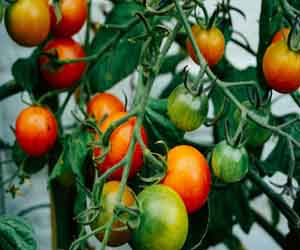 Start Small: For beginners, it's often best to start with a small garden area. This can be a corner of your backyard, a few pots on your balcony, or even a sunny windowsill. Beginning with a small space allows you to learn the basics without feeling overwhelmed.
Start Small: For beginners, it's often best to start with a small garden area. This can be a corner of your backyard, a few pots on your balcony, or even a sunny windowsill. Beginning with a small space allows you to learn the basics without feeling overwhelmed.
Choose The Right Location: select a location that receives adequate sunlight for the plants you want to grow. Most vegetables and flowers require at least 6 hours of direct sunlight per day. If you have limited sun exposure, consider shade-tolerant plants like hostas or ferns.
Select Easy-To-Grow Plants: As a beginner, it's wise to start with plants that are known for their resilience and forgiving nature. Some easy-to-grow choices include tomatoes, basil, marigolds, and zinnias. These plants are relatively low-maintenance and can be quite forgiving of minor mistakes.
Quality Soil Is Key: Healthy soil is the foundation of a successful garden. Invest in good-quality potting mix or amend your garden soil with organic matter like compost to improve its fertility and structure.
Learn About Watering: Overwatering and underwatering are common mistakes for beginners. Research the specific watering needs of your plants. Most plants prefer even, consistent moisture, but some drought-tolerant varieties may require less frequent watering.
Gardening Tools: Acquire a few essential gardening tools, including a trowel, hand pruners, a watering can or hose, and gardening gloves. These tools will make your gardening tasks much easier.
Garden Maintenance: Regular garden maintenance includes weeding, deadheading (removing spent flowers), and pruning. These tasks help keep your garden looking tidy and encourage healthy growth.